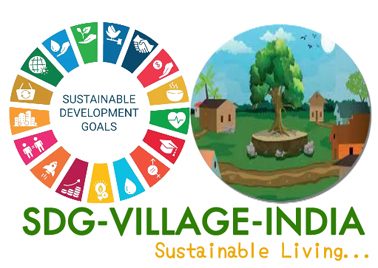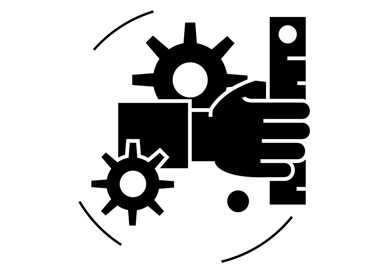
Sustainable development is an organizing principle that aims to meet human development goals while also enabling natural systems to provide necessary natural resources and ecosystem services to humans. The desired result is a society where living conditions and resources meet human needs without undermining the planetary integrity and stability of the natural system. The Brundtland Report in 1987 defined sustainable development as “development that meets the needs of the present generation without compromising the ability of future generations to meet their own needs”. The concept of sustainable development nowadays has a focus on economic development, social development and environmental protection for future generations.
Sustainable development was first institutionalized with the Rio Process initiated at the 1992 Earth Summit in Rio de Janeiro. In 2015 the United Nations General Assembly (UNGA) adopted the Sustainable Development Goals (2015 to 2030) and explained how the goals are integrated and indivisible to achieve sustainable development at the global level. The UNGA’s 17 goals address the global challenges, including poverty, inequality, climate change, environmental degradation, peace, and justice.
Sustainable development is interlinked with the normative concept of sustainability. UNESCO formulated a distinction between the two concepts as follows: “Sustainability is often thought of as a long-term goal (i.e. a more sustainable world), while sustainable development refers to the many processes and pathways to achieve it. The concept of sustainable development has been criticized in various ways. While some see it as paradoxical (or as an oxymoron) and regard development as inherently unsustainable, others are disappointed in the lack of progress that has been achieved so far. Part of the problem is that “development” itself is not consistently defined.

Sustainable development has its roots in ideas regarding sustainable forest management, which were developed in Europe during the 17th and 18th centuries. In response to a growing awareness of the depletion of timber resources in England, John Evelyn argued, in his 1662 essay Sylva, that “sowing and planting of trees had to be regarded as a national duty of every landowner, in order to stop the destructive over-exploitation of natural resources.” In 1713, Hans Carl von Carlowitz, a senior mining administrator in the service of Elector Frederick Augustus I of Saxony published Sylvicultura economics, a 400-page work on forestry. Building upon the ideas of Evelyn and French minister Jean-Baptiste Colbert, von Carlowitz developed the concept of managing forests for sustained yield. His work influenced others, including Alexander von Humboldt and Georg Ludwig Hartig, eventually leading to the development of the science of forestry. This, in turn, influenced people like Gifford Pinchot, the first head of the US Forest Service, whose approach to forest management was driven by the idea of wise use of resources, and Aldo Leopold whose land ethic was influential in the development of the environmental movement in the 1960s.
Following the publication of Rachel Carson’s Silent Spring in 1962, the developing environmental movement drew attention to the relationship between economic growth and environmental degradation. Kenneth E. Boulding, in his influential 1966 essay The Economics of the Coming Spaceship Earth, identified the need for the economic system to fit itself to the ecological system with its limited pools of resources. Another milestone was the 1968 article by Garrett Hardin that popularized the term “tragedy of the commons”. One of the first uses of the term sustainable in the contemporary sense was by the Club of Rome in 1972 in its classic report on the Limits to Growth, written by a group of scientists led by Dennis and Donella Meadows of the Massachusetts Institute of Technology. Describing the desirable “state of global equilibrium”, the authors wrote: “We are searching for a model output that represents a world system that is sustainable without sudden and uncontrolled collapse and capable of satisfying the basic material requirements of all of its people. That year also saw the publication of the influential book, A Blueprint for Survival.
In 1975, an MIT research group prepared ten days of hearings on “Growth and Its Implication for the Future” for the US Congress, the first hearings ever held on sustainable development. In 1980, the International Union for Conservation of Nature published a world conservation strategy that included one of the first references to sustainable development as a global priority and introduced the term “sustainable development”. Two years later, the United Nations World Charter for Natureraised five principles of conservation by which human conduct affecting nature is to be guided and judged.
Since the Brundtland Report, the concept of sustainable development has developed beyond the initial intergenerational framework to focus more on the goal of “socially inclusive and environmentally sustainable economic growth”.In 1992, the UN Conference on Environment and Development published the Earth Charter, which outlines the building of a just, sustainable, and peaceful global society in the 21st century. The action plan Agenda 21 for sustainable development identified information, integration, and participation as key building blocks to help countries achieve development that recognizes these interdependent pillars. Furthermore, Agenda 21 emphasizes that broad public participation in decision-making is a fundamental prerequisite for achieving sustainable development.
The Rio Protocol was a huge leap forward: for the first time, the world agreed on a sustainability agenda. In fact, a global consensus was facilitated by neglecting concrete goals and operational details. The Sustainable Development Goals (SDGs) now have concrete targets (unlike the results from the Rio Process) but no methods for sanctions.
Pathway traveled
The 2030 Agenda for Sustainable Development, adopted by all United Nations Member States in 2015, provides a shared blueprint for peace and prosperity for people and the planet, now and into the future. At its heart are the 17 Sustainable Development Goals (SDGs), which are an urgent call for action by all countries – developed and developing – in a global partnership. They recognize that ending poverty and other deprivations must go hand-in-hand with strategies that improve health and education, reduce inequality, and spur economic growth – all while tackling climate change and working to preserve our oceans and forests.
The SDGs build on decades of work by countries and the UN, including the UN Department of Economic and Social Affairs
- In June 1992, at the Earth Summit in Rio de Janeiro, Brazil, more than 178 countries adopted Agenda 21, a comprehensive plan of action to build a global partnership for sustainable development to improve human lives and protect the environment.
- Member States unanimously adopted the Millennium Declaration at the Millennium Summit in September 2000 at UN Headquarters in New York. The Summit led to the elaboration of eight Millennium Development Goals (MDGs) to reduce extreme poverty by 2015.
- The Johannesburg Declaration on Sustainable Development and the Plan of Implementation, adopted at the World Summit on Sustainable Development in South Africa in 2002, reaffirmed the global community’s commitments to poverty eradication and the environment, and built on Agenda 21 and the Millennium Declaration by including more emphasis on multilateral partnerships.
- At the United Nations Conference on Sustainable Development (Rio+20) in Rio de Janeiro, Brazil, in June 2012, Member States adopted the outcome document “The Future We Want” in which they decided, inter alia, to launch a process to develop a set of SDGs to build upon the MDGs and to establish the UN High-level Political Forum on Sustainable Development. The Rio +20 outcome also contained other measures for implementing sustainable development, including mandates for future programmes of work in development financing, small island developing states and more.
- In 2013, the General Assembly set up a 30-member Open Working Group to develop a proposal on the SDGs.
- In January 2015, the General Assembly began the negotiation process on the post-2015 development agenda. The process culminated in the subsequent adoption of the 2030 Agenda for Sustainable Development, with 17 SDGs at its core, at the UN Sustainable Development Summit in September 2015.
- 2015 was a landmark year for multilateralism and international policy shaping, with the adoption of several major agreements:
- Sendai Framework for Disaster Risk Reduction (March 2015)
- Addis Ababa Action Agenda on Financing for Development (July 2015)
- Transforming our world: the 2030 Agenda for Sustainable Development with its 17 SDGs was adopted at the UN Sustainable Development Summit in New York in September 2015.
- Paris Agreement on Climate Change (December 2015)
- Now, the annual High-level Political Forum on Sustainable Development serves as the central UN platform for the follow-up and review of the SDGs.
Today, the Division for Sustainable Development Goals (DSDG) in the United Nations Department of Economic and Social Affairs (UNDESA) provides substantive support and capacity-building for the SDGs and their related thematic issues, including water, energy, climate, oceans, urbanization, transport, science and technology, the Global Sustainable Development Report (GSDR), partnerships and Small Island Developing States. DSDG plays a key role in the evaluation of UN system wide implementation of the 2030 Agenda and on advocacy and outreach activities relating to the SDGs. In order to make the 2030 Agenda a reality, broad ownership of the SDGs must translate into a strong commitment by all stakeholders to implement the global goals. DSDG aims to help facilitate this engagement.
OUR LOCATIONS

Corporate Office
34-A/21, Uttham Nagar, New Delhi-110059

Operations
H3QV+G4M, Rock church lane, Behind Balaji Hospital, Sangareddy, Telangana-502285


